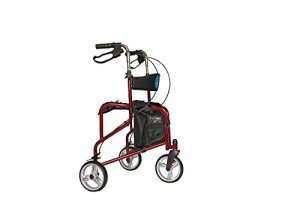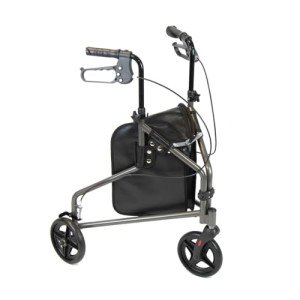Understanding Rollators for Walking: A Comprehensive Guide
Rollators are a vital mobility aid that enhances the freedom and self-reliance of those with limited walking abilities. They are designed not only to provide stability and support but likewise to motivate mobility and engagement in day-to-day activities for people of any ages. This short article dives deep into the world of rollators, offering insights into their functions, benefits, types, upkeep, and crucial factors to consider when selecting the most appropriate model.
What is a Rollator?
A rollator is a mobile walking aid equipped with 4 wheels, handgrips, a seat, and frequently includes additional features such as storage baskets and brakes. Unlike conventional walkers, which require the user to raise them off the ground, rollators can be pushed along as the user walks, making them especially helpful for people with limited strength or balance.
Secret Features of Rollators
Rollators consist of several functions that improve their use:

- Wheels: Most rollators feature swivel or fixed wheels for better maneuverability indoors and outdoors.
- Brakes: Hand brakes enable users to manage their speed and stop securely.
- Seat: Many rollators provide an integrated seat for users to rest when required.
- Lightweight Frame: Constructed from lightweight products, rollators are simple to raise and carry.
- Adjustable Height: Most rollators enable height changes to accommodate the user's stature.
Benefits of Using a Rollator
Utilizing a rollator offers many benefits, particularly for seniors and individuals with mobility obstacles. These might consist of:
- Improved Stability: Rollators supply a stable base that assists prevent falls.
- Increased Mobility: Users can move about more easily, whether inside or outdoors.
- Boosted Independence: With a rollator, users can perform day-to-day jobs without needing assistance.
- Hassle-free Seating: The availability of a seat enables users to rest whenever they feel tired.
Kinds of Rollators
When considering which Rollator For Walking to select, it's crucial to acknowledge the different types readily available. The main categories include:
- Standard Rollators: Typically have four wheels and a seat, ideal for most indoor and outdoor environments.
- Sturdy Rollators: Designed for larger people, these rollators have strengthened frames and higher weight capabilities.
- Three-Wheel Rollators: These provide a more lightweight and compact choice, making them perfect for narrower spaces.
- Foldable Rollators: Convenient for transport, these models can be quickly collapsed and kept when not in use.
| Type of Rollator | Description | Best For |
|---|---|---|
| Standard Rollator | Four wheels, seat, many alternatives. | General use, indoor and outdoor. |
| Heavy-Duty Rollator | Reinforced for higher weight capability. | Larger individuals needing additional support. |
| Three-Wheel Rollator | Compact and lightweight, simple to maneuver. | Limited space and indoor use. |
| Foldable Rollator | Collapsible for easy transport. | Regular travelers or caretakers. |
How to Choose the Right Rollator
Picking the right rollator includes considering several aspects to satisfy the person's particular requirements:
- Weight Capacity: Ensure the rollator can support the user's weight.
- Height Adjustability: Look for designs that can be adapted to the user's height for optimal convenience.
- Features Needed: Consider whether additional functions like baskets, trays, or hand brakes are essential.
- Intended Use: Determine if the rollator will be mainly used indoors, outdoors, or both.
Maintenance Tips for Rollators
To lengthen the lifespan and performance of a rollator, regular upkeep is important. Here are some helpful suggestions:
- Check Brakes: Regularly test brakes to ensure they engage appropriately.
- Examine Wheels: Look for indications of wear and tear; wheels need to roll smoothly.
- Clean Regularly: Wipe down the frame and parts to prevent dirt buildup.
- Tighten up Bolts: Periodically check and tighten up any loose bolts or screws.
Often Asked Questions (FAQs)
1. Can rollators be used on uneven surface areas?
Yes, many rollators are developed with larger wheels or specialized treads to manage unequal surfaces. Nevertheless, users must work out caution and guarantee they feel stable when navigating such terrains.

2. How do I determine the right height for a rollator?
When standing directly, the manages of the rollator must align with the user's wrist when their arms are unwinded at their sides. This position ensures comfortable use.
3. Do I require a prescription to purchase a rollator?
No, rollators can be purchased without a prescription. However, speaking with a healthcare specialist can be advantageous to identify the best option based upon specific needs.
4. Are rollators covered by insurance?
Coverage for rollators can differ based on the kind of insurance strategy. Numerous Medicare plans provide protection for some types of walkers, including rollators. It's a good idea to consult the insurance company straight.
Rollators for walking significantly improve the lives of many individuals facing mobility challenges. Providing stability, self-reliance, and ease of movement, they function as essential tools for keeping an active lifestyle. Comprehending the different types, features, and how to keep them in good condition can empower users in making notified decisions. As mobility needs differ considerably from person to individual, it is vital to pick a rollator that best satisfies individual requirements and enhances quality of life.








